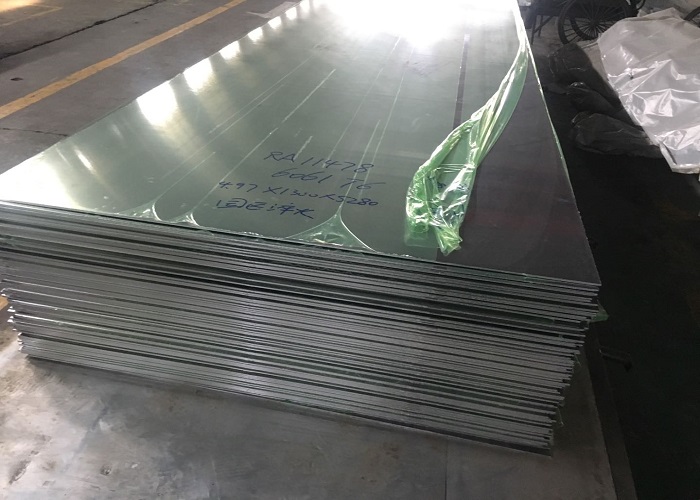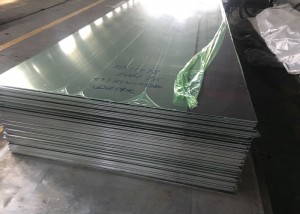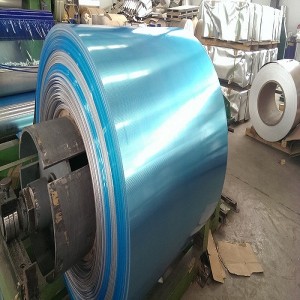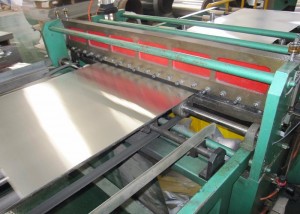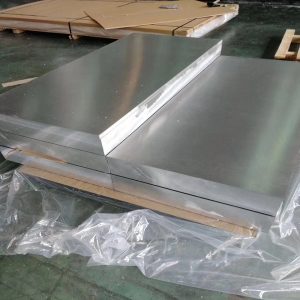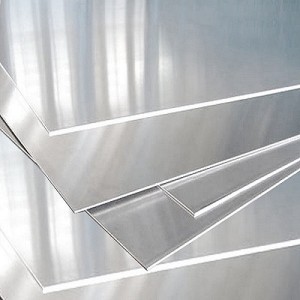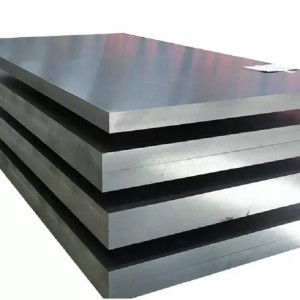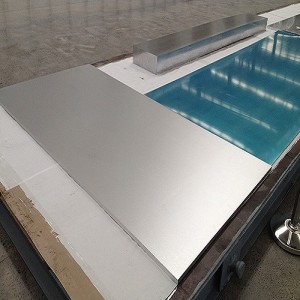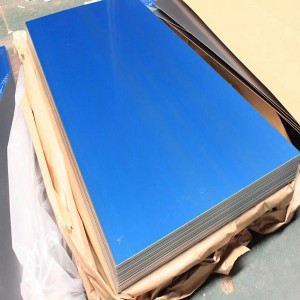China 6061 aluminum sheet Manufacturer and Supplier | Ruiyi
6061 aluminum alloy is a high-quality aluminum alloy product produced by heat treatment and pre-stretching process. Although its strength cannot be compared with 2XXX series or 7XXX series, its magnesium and silicon alloys have many characteristics, excellent processing performance and excellent welding characteristics. And electroplating, good corrosion resistance, high toughness and no deformation after processing, dense material without defects and easy to polish, easy to color film, excellent oxidation effect and other excellent characteristics.
The main alloying elements of 6061 aluminum alloy are magnesium and silicon, and form Mg2Si. If it contains a certain amount of manganese and chromium, it can neutralize the bad effects of iron; sometimes a small amount of copper or zinc is added to improve the strength of the alloy without significantly reducing its corrosion resistance; there is still a small amount of conductive material. copper to offset the adverse effects of titanium and iron on electrical conductivity; zirconium or titanium can refine grains and control recrystallization; in order to improve machinability, lead and bismuth can be added. Mg2Si is solid-dissolved in aluminum, which makes the alloy have artificial aging hardening function. The main alloying elements in 6061 aluminum alloy are magnesium and silicon, which have medium strength, good corrosion resistance, weldability, and good oxidation effect.
The general purpose 6061 Aluminum Sheet & Plate is heat treatable, resists cracking due to stress, and is easy to weld and machine, but limited on formability. 6061 Aluminum Sheet & Plate are ideal for structural framing, base plates, gussetts, aircraft, marine and automotive parts, etc
Because 6061 aluminium alloy is easy to extrude, it can provide a variety of product forms such as sheet, strip, plate, rod, forgings, tubes, pipes, wires, extruded parts and structural shapes. Aluminum 6061 has good corrosion resistance, mechanical properties, formability, weldability, and machinability.
It belongs to 6000 series (Al-Mg-Si) alloy aluminum sheet and has good weldability. At the same time, 6061 aluminum coil sheet has excellent aluminum-magnesium composition ratio and strong corrosion resistance. The hardness is 95HB (Brinell), easy to process and form, non-stick knife
The 6061 alloy is one of the most common for extrusion, but you may be considering other options for your particular application. Below are some other common alloys that are often considered as alternatives.
6061 and 6063 are the two most popular extrusion alloys. 6063 aluminum occupies the number one spot and 6061 occupies spot number two. As alloys in the 6000 series, they both have magnesium and silicon as their primary alloying elements. Thus, they have many similar properties. 6061 offers higher strength, however. As such, it is often used for more structural applications. 6063, on the other hand, is used for applications such as railing or trim, windows, and doors, due to its better appearance and corrosion resistance.
Like 6061, 5052 aluminum has magnesium as a primary alloying element. In the case of 5052, it is the only primary alloying element. 6061 has silicon as well. One of the key benefits of this alloy is its high level of weldability compared to other alloys. For projects where weldability is key, it is worth considering. One downside to 5052, though, is that it is not heat treatable. It is good for a variety of welding applications and it works well in marine applications due to its high corrosion resistance.
Primarily used in aerospace applications, the 2024 alloy is known for high strength. Its main alloying element is copper, and although it is strong and has good fatigue resistance, it is less machinable and more difficult to weld than 6061. It also offers poor corrosion resistance and is often used in wing and fuselage structures which come under high tension.
A member of the 6000 series, 6061 aluminum’s main alloying elements are magnesium and silicon, and it’s a great example of a jack of all trades. The alloy is somewhat universal, seeing some exposure in structural and building products as well as the aerospace and recreation industries.
Alloy 6061 displays good tensile strength, which can be improved by temper treatment, and good corrosion resistance, weldability, and workability. Its workability makes it the right choice for many extrusion projects, as it is easy to form.
The alloy is widely available at a relatively low cost and is a great option to produce varied and precise components in different shapes. Although alloy 6061 doesn’t rank first in any aluminum properties tier list, it’s a great and reliable all-around aluminum alloy to work with
